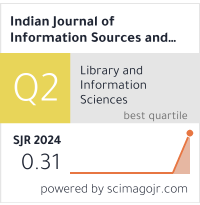The Mobile Learning Enhances the Quality of Learning: A Study
DOI:
https://doi.org/10.51983/ijiss.2018.8.1.508Keywords:
Mobile learning, Learning, Mobile TechnologyAbstract
The use of mobile phones and other portable devices is beginning to have an impact on how learning takes place in many disciplines and contexts, including language learning. Learners who are not dependent on access to fixed computers can engage in activities that relate more closely to their current surroundings, sometimes crossing the border between formal and informal learning. This creates the potential for significant change in teaching and learning practices. Taking the broader field of mobile learning as the setting within which developments in mobile-assisted language learning may be understood, the paper argues that an emphasis on mobility can lead to new perspectives and practices. With increased popular access to information and knowledge anywhere, anytime, the role of education, perhaps especially formal education, is challenged and the relationships between education, society, and technology are now more dynamic than ever .The present paper was based on secondary sources of data highlighting of concept, Features, values , Challenges and advantages of M-learning.
References
MOBIlearn. (2003). Guidelines for learning/teaching/tutoring in a mobile environment, pp. 6, October.
Lin Kinshuk, T. (2004). Improving mobile learning environments by applying mobile agent technology. Massey University, Palmerstone North, New Zealand. Retrieved from http://www.col.org/pcf3/papers/pdfs/kinshuk_lin_2.pdf
Sharples, M., Taylor, J., & Vavoula, G. (2005). Towards a Theory of Mobile Learning. International Journal of Continuing Engineering Education and Life Long Learning, 12(5/6), 504-520.
Herrington, A., & Herrington, J. (2006). What is an authentic learning environment? In A. Herrington & J. Herrington (Eds.), Authentic learning environments in higher education. Hershey, PA: ISP, 1-13.
Maniar, N., Bennett, E., Hand, S., & Allan, G. (2008). The effect of mobile phone screen size on video based learning. Journal of Software, 3(4), 51–61.
Attewell, J. (2008). Towards sustainable large scale implementation of mobile learning: The mobile learning network (MoLeNET). In J Traxler, B. Riordan & C. Dennett (Eds.), The Bridge from text to context. Proceedings of the mLearn 2008 Conference, University of Wolverhampton, 28-35.
Singh, M. (2010). M-Learning: A New Approach to Learn Better. International Journal of Education and Allied Sciences, 2(2), 65–72.
Savill, C. (2010). Mobile learning in practice: Piloting a mobile learning teachers‘ toolkit in further education colleges. pp. 8.
Crescente, M. L., & Lee, D. (2011). Critical issues of M-Learning: design models, adoption processes, and future trends. Journal of the Chinese Institute of Industrial Engineers, 28(2), 111–123.
Crescente, M. L., & Lee, D. (2011). Critical issues of M-Learning: design models, adoption processes, and future trends. Journal of the Chinese Institute of Industrial Engineers, 28(2), 111–123.
Downloads
Published
How to Cite
Issue
Section
License
Copyright (c) 2018 The Research Publication

This work is licensed under a Creative Commons Attribution-NonCommercial-NoDerivatives 4.0 International License.









